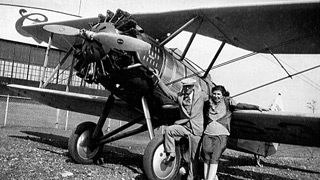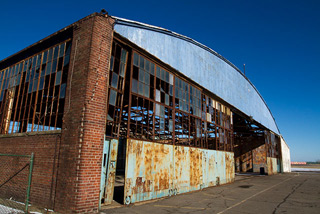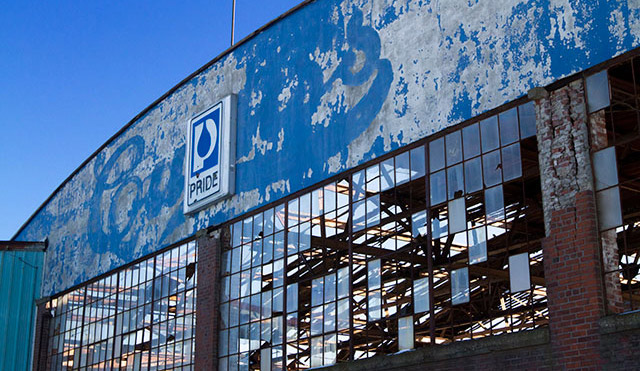An engine roars just yards away as a Cirrus accelerates down Runway 24 at Igor Sikorsky Memorial Airport in Bridgeport, Conn., while a small band of history buffs gathers in the biting cold, showing off their new rental.
They speak of “mostly cosmetic” changes to the historic hangar, one of the first two permanent structures built by Glenn Curtiss at the close of the Roaring Twenties at what was then a new airport. Sunlight filters through huge gaps in a roof, wooden decking long since weathered to pieces. Cracks are visible in the brickwork, more windows are missing than not.
“This is one of only two original Curtiss hangars that we know are still standing,” said Christopher Soltis, curator of the Connecticut Air and Space Center, the nonprofit museum embarked on an ambitious effort to restore the hangar and convert it into a showplace for some of the vintage aircraft in a collection that includes many examples of the state’s contributions to aviation. That includes Sikorsky helicopters and an F4U Corsair produced across the street at the sprawling United Aircraft and Transport Corp. plant, an airplane that played a key role in the Pacific during World War II.
 Connecticut Air and Space Center volunteer Morgan Kaolian, crouched behind his father and the left tire of the biplane, first visited Bridgeport Airport with his parents in the 1930s. Photo courtesy Morgan Koalian/AeroPix.
Connecticut Air and Space Center volunteer Morgan Kaolian, crouched behind his father and the left tire of the biplane, first visited Bridgeport Airport with his parents in the 1930s. Photo courtesy Morgan Koalian/AeroPix.
Curtiss built a flying school here, and luminaries of the Golden Age flew in: Charles Lindbergh, Amelia Earhart, and Howard Hughes among them. Soltis said it’s nearly certain they all used the hangar, since, at the time, it was the biggest hangar on the field.
The Great Depression forced Curtiss (by then merged into Curtiss-Wright) to withdraw, leaving the hangar behind for generations of further use. The hangar has weathered two major hurricanes—one in 1938, and more recently Hurricane Sandy, which flooded the field—though years of neglect have done more damage than the storms. Mark Corvino, vice president of the not-for-profit museum and manager of the restoration project, said engineers have deemed the steel frame sound. The museum has struck a deal with city and airport officials to lease the hangar long-term, though it comes with a deadline: “In our lease, we have three years to complete the project,” said Corvino.
Executive Director Andrew King said the museum has collected about $52,000 in private donations to date, and hopes for more: Various grants are expected to add $150,000, but the first phase of the project—making the hangar weather-tight—is expected to cost $250,000. Additional work to install heating and air conditioning, and transform the space into a museum display for various aircraft in the group’s collection will cost an additional $500,000 by current estimates.
 The Connecticut Air and Space Center hopes to transform this vintage Curtiss hangar into a museum to showcase some of the aircraft in the group’s collection.
The Connecticut Air and Space Center hopes to transform this vintage Curtiss hangar into a museum to showcase some of the aircraft in the group’s collection.
The alternative is a wrecking ball, a fate that will befall the original terminal building adjacent to the Curtiss hangar, and much of the United Aircraft factory across the street where the Corsair fighters were built in huge numbers. King said municipal and state officials have been cooperative to the point of helping the group secure grants, and the museum hopes corporate donations and sponsorships will provide still more lift.
“We’re developing, I think, a new era of understanding that our history is valuable and needs to be protected and saved,” King said, standing a few feet from where the helicopter was born, along with the Corsair, and just down the street from where America’s first airshow was held in 1911 (not at the modern airport location, but nearby). “So much happened literally just in a mile circle of where we stand, where we’re at in the shop right here, it’s mind boggling.”

The original cursive Curtiss logo has survived decades of overpaint as this hangar was used in turn by various businesses following Curtiss-Wright’s departure in the 1930s.



